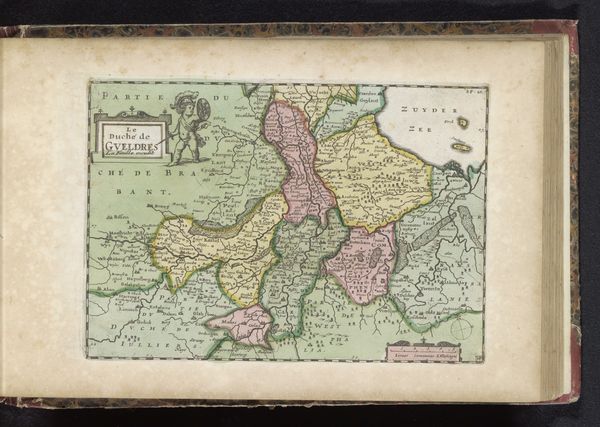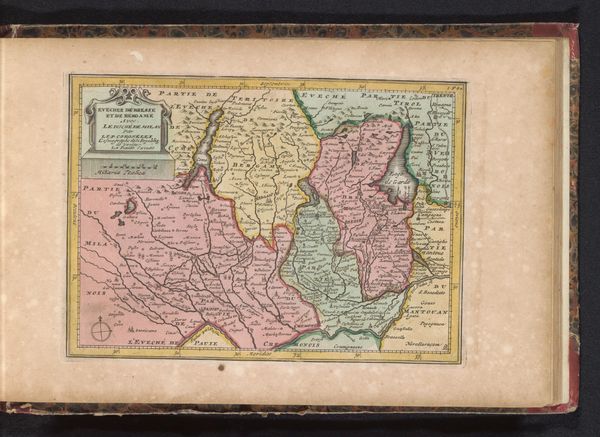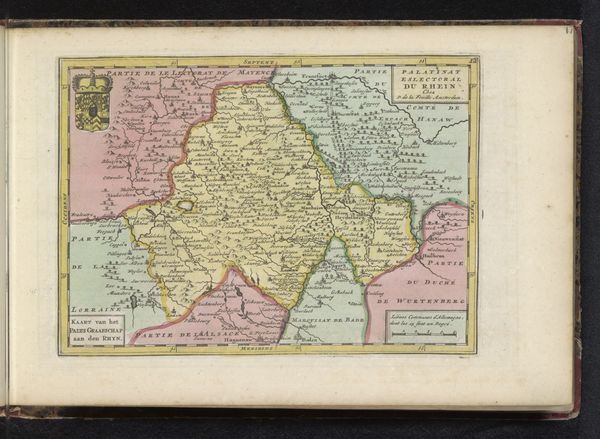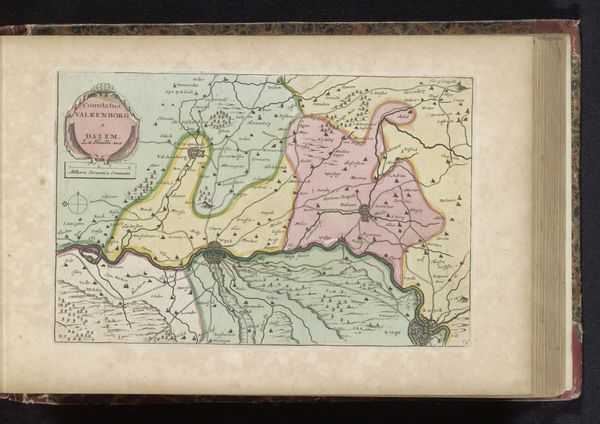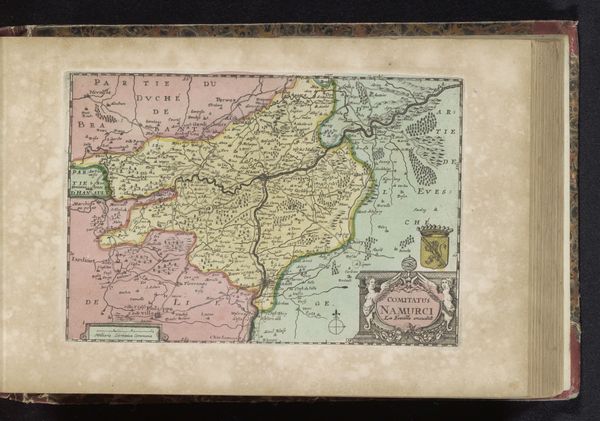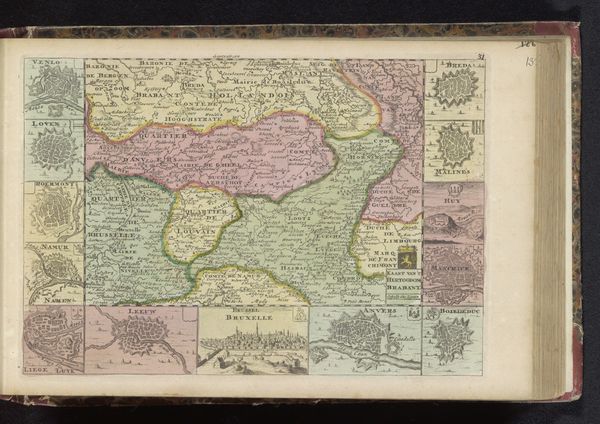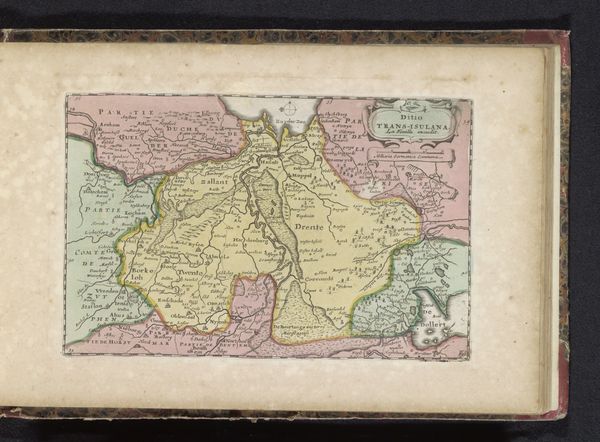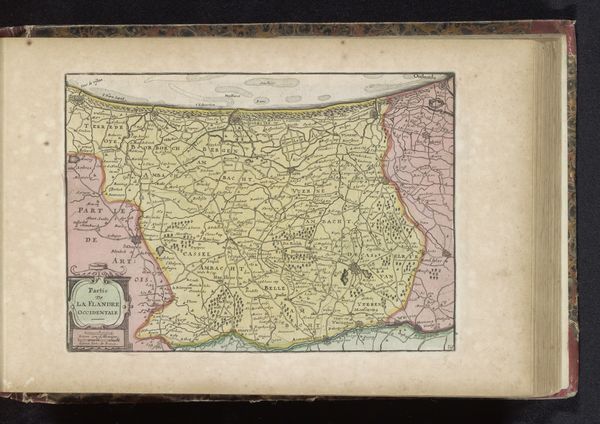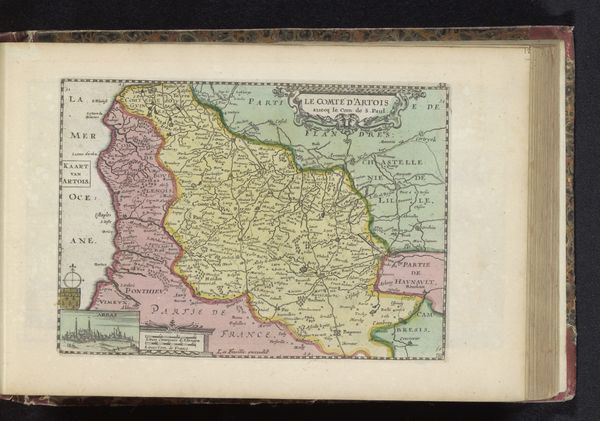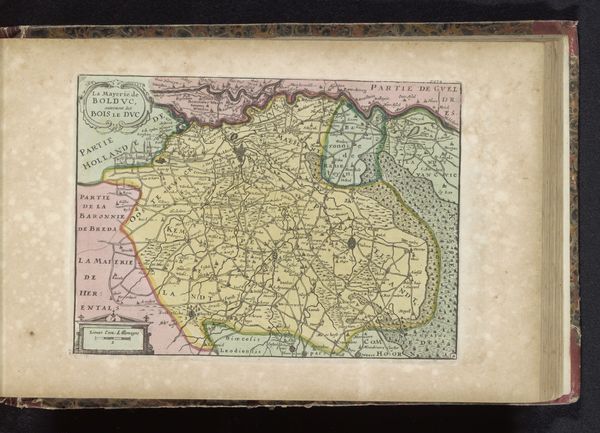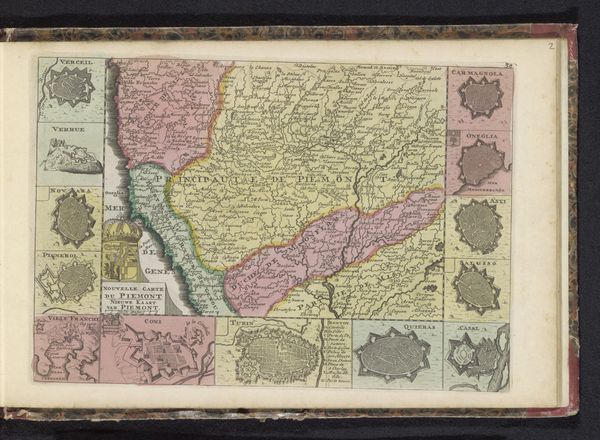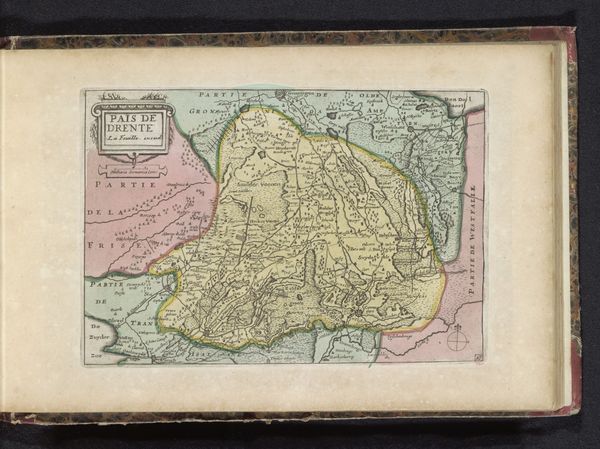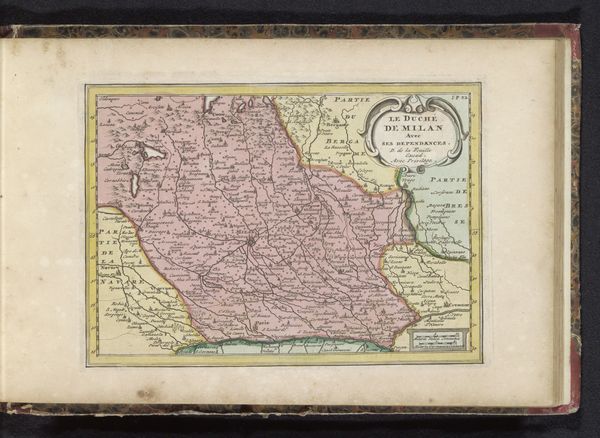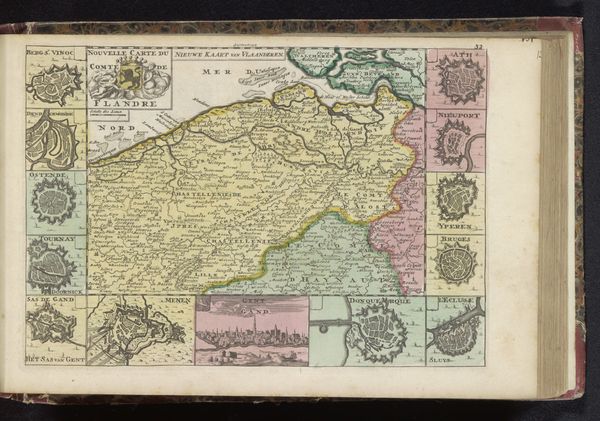
drawing, print, paper, ink, engraving
#
drawing
#
baroque
# print
#
landscape
#
paper
#
ink
#
coloured pencil
#
geometric
#
engraving
#
watercolor
Dimensions: height 160 mm, width 232 mm
Copyright: Rijks Museum: Open Domain
Curator: So, we’re looking at an engraving titled "Kaart van de Fossa Eugeniana", dating from around 1700 to 1735. It’s ink on paper, and the artist is anonymous. Editor: It’s interesting to see this blend of art and cartography, how precise lines meet watercolour washes. It feels like a document trying to be aesthetically pleasing, in a way. How should we approach this from an art historical perspective? Curator: Let’s consider the paper, the ink, the very act of engraving. These weren't simply neutral materials. Who controlled the production of paper? What social class had access to these specific inks? The "landscape" here isn’t just geographic; it’s a product of power and industry. Editor: So you're saying we need to think about the political implications embedded in the materials themselves? Curator: Exactly. This map wasn't just created to represent territory; it participated in its control and consumption. The act of engraving, a process requiring skilled labor, translates landscape into a commodity, a visual possession. Think about who would commission such a piece and how they planned to use it. Editor: I guess I hadn’t considered the material value and social implications of the pigments and the printing process so directly. I was focused on what the map *depicts*, but it's equally important to investigate how it was *made* and who benefited from its production. Curator: Precisely. The means of production are rarely neutral. Understanding them helps us understand the social fabric of the time and how it’s literally imprinted in this map. Editor: It's fascinating to think of artistic materials not just as tools for expression, but also as artifacts embedded within a broader economic and political network. It's like the map itself is charting the flow of resources and power, not just geography. Curator: Indeed. We've begun to chart our own path of inquiry by questioning the materials and manufacturing process itself. Hopefully, it encourages others to engage with art through such questions as well.
Comments
No comments
Be the first to comment and join the conversation on the ultimate creative platform.
